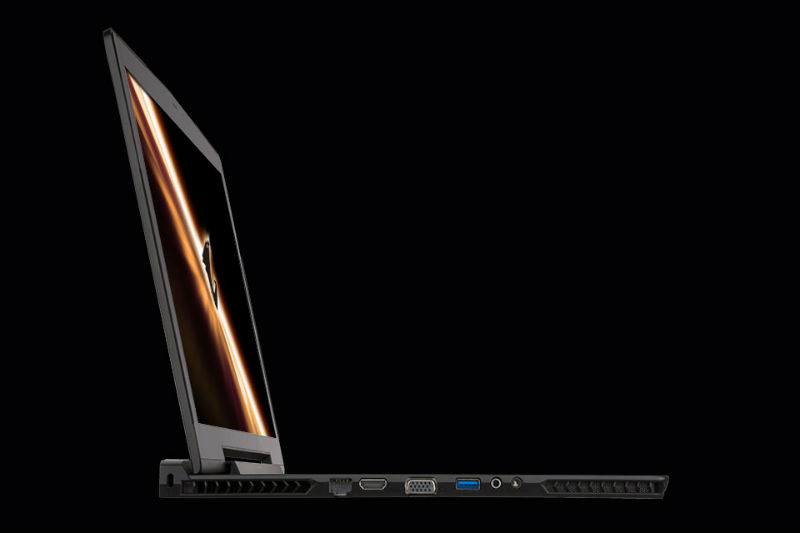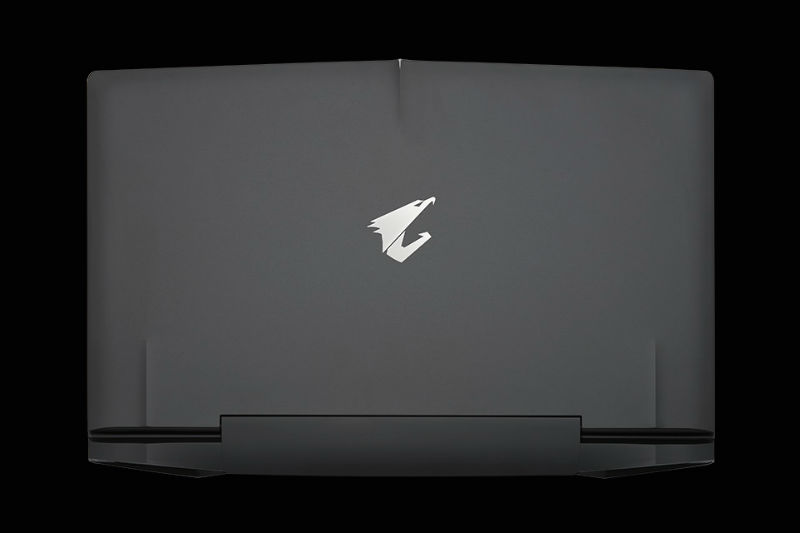Gigabyte Aorus X7 Pro v3: A fast, stylish entertainment notebook [Review]

When we took our first look at the original Aorus X7, we were decidedly impressed at how much Gigabyte had managed to fit into a notebook just over 2cm thick.
The Aorus X7 Pro v3 improves the specs further, promising even more performance in an incredibly portable package for a notebook aimed primarily at entertainment.
CPU
The processor has been upgraded slightly compared to the original Aorus X7, with a 2.5GHz Intel Core i7 rather than 2.4GHz. This is the 4870HQ from the latest Haswell generation, which is a quad-core processor with the ability to raise one core to 3.7GHz, or all four to 3.5GHz. So the CPU can adjust itself as required, with the standard frequency a very small part of the story.
As usual, Hyper-Threading means it presents itself as eight virtual cores, so the processor has plenty of potential whether running a single task or multiple tasks in parallel. Gigabyte has partnered the 4870HQ with a generous 16GB of DDR3 SDRAM, although the maximum for this notebook is 32GB, so there’s room to upgrade if you need an even greater level of performance.
Storage
The internal storage allocation is potentially enormous with up to four storage devices possible inside this incredibly thin chassis.
Our system included two 256GB LiteOn LMT-256L9M mSATA solid state disks in RAID 0 configuration, giving a healthy half a terabyte of extremely fast storage for lightning quick boot and application loading times, and plenty of capacity for software. But it’s also possible to specify a third mSATA drive, with capacities of up to 512GB apiece, as well as a fourth conventional SATA hard disk up to 2TB. The one thing you don’t get, due to the thinness of this chassis, is an optical drive, which might be a drawback if you want to load games from DVD.
Screen
The immense graphical capability wouldn’t be much use if the screen wasn’t up to scratch. Fortunately, the Aorus’s 17.3in Full HD display uses IPS technology, which is decidedly superior to standard TFTs, and offers rich colors as well as excellent viewing angles.
With the matte finish of the screen, there’s little problem from reflections. Although an increasing number of notebooks now offer Retina-style displays with resolutions well beyond Full HD, we’re still not convinced by the utility of this on a 17in panel just yet, because a lot of Windows software is still not compatible, rendering interface elements illegibly small. However, the Aorus should be able to drive an external 4K screen with considerable aplomb.
Usability
Gigabyte also places a considerable focus on the Acoustic+ audio capabilities of the Aorus X7 Pro V3, and the level and quality available from the dual subwoofers is well beyond most notebooks, so you may not have to rely on your headphones with this system.
Considering the hugely heavy gaming laptops available from the likes of Alienware, the 3kg weight of the Aorus seems decidedly miserly, although it’s not exactly in ultraportable territory. The durable aluminum chassis is completely black, with some subtle angles rather than just being a rectangular slab. The end result is stylish, albeit more understated than an Alienware notebook, and the width of the 17in form factor has been used to supply an extra row of programmable macro keys down the left-hand-side of the keyboard as well as a full numeric keypad on the right.
The keyboard action is shallow but offers enough response to be comfortable. The glossy trackpad isn’t the most enjoyable we have used and has a little too much friction, a matte finish would’ve been better as it’s easier to slide your finger over.

Connectivity
The 17in chassis affords plenty of room for ports. The left-hand side is home to LAN, full-sized HDMI, VGA, USB 3.0, and discrete microphone and headphone minijacks. On the right you will find: a mini DisplayPort, a second full-sized HDMI covered with a rubber stopper (presumably so you use the mini DisplayPort instead), two more USB 3.0 ports, and a SD card slot. There are also a couple of USB 2.0 ports on the rear, alongside the power connection. Networking is well served, with a KillerLAN chipset providing the Gigabit wired LAN alongside the 802.11ac Wi-Fi and Bluetooth 4.0.
Performance
The Core i7 processor also incorporates the (currently) fastest version of Intel’s integrated graphics chip, the Iris Pro 5200, which comes with its own 128MB allocation of eDRAM. The Iris Pro 5200 sports 40 execution units, twice as many as the latest Haswell generation of the 4000 series. However, it will only come into play when the notebook isn’t doing anything particularly strenuous with 3D graphics, as otherwise the real stars of the show will take the lead role. These are two NVIDIA GeForce GTX 970M chips in SLI mode. Each GPU on its own sports 1,280 CUDA cores running at between 924 and 1,038MHz, and 3GB of GDDR5 memory. Together they promise top-of-the-line portable 3D performance.
Unsurprisingly, thanks to the fast CPU and powerful graphics chips, the Aorus X7 Pro v3 provides supreme performance in almost every area. The Maxon Cinebench rendering scores of 6.78 in R11.5 and 613 in R15 are some of the best we have seen, and the OpenGL result of 66.3 in R11.5 is close to the best, whilst the result of 141.63 in R15 is far ahead of anything we have tested before. In PC Mark 8’s Home test the Aorus achieved 4,661, with 4,890 in the Work test, both of which are the best we have seen.
Of course, gaming is where this notebook is mostly focused, and here it reigns supreme. The Futuremark 3DMark11 score of 14,565 is almost twice that of the original Aorus X7, and the highest we have ever seen by some margin. The 3DMark Firestrike 1.1 result of 10,652 is around 2.5 times as fast as the original Aorus, and again streets ahead of anything we have tested before. So this really is a gaming powerhouse, despite its skinny appearance.
There had to be a compromise somewhere, though, and unsurprisingly it comes with battery life. The Aorus lasted just 100 minutes of PC Mark 8’s Home test, whilst maintaining a score of 3,549. It also endured just 87 minutes of the more grueling Battery Eater Pro, which makes more extensive use of CPU and graphics. Neither are terrible for a 17in gaming laptop, but they are noticeably behind the first Aorus we looked at, and mean you can only realistically use this laptop for a couple of hours away from the power socket, and much less when gaming.
Verdict
The Gigabyte Aorus X7 v3 doesn’t quite live up to the portability it promises when it comes to battery life, but it does still pack a huge amount of performance into a decidedly slim chassis, particularly where 3D graphics are concerned. The screen is an improvement on the first model, too, and there’s a reasonable quantity of super-fast storage. Even the $2599 price isn’t outrageous, considering the specification. If you’re after a fast, stylish entertainment notebook, the Gigabyte Aorus X7 v3 is an enticing bit of kit.
Pros
- Unparalleled 3D graphics performance
- Excellent application performance
- Thin and portable for a 17.3in notebook
- Fast storage
Cons
- Poor battery life
- No optical drive

Published under license from ITProPortal.com, a Net Communities Ltd Publication. All rights reserved.